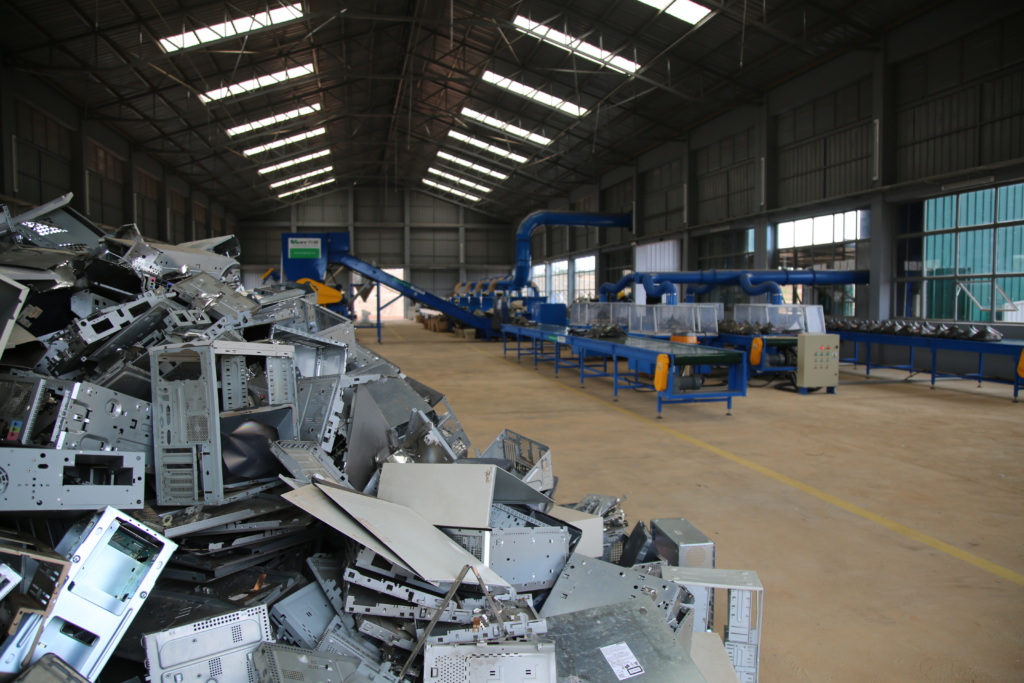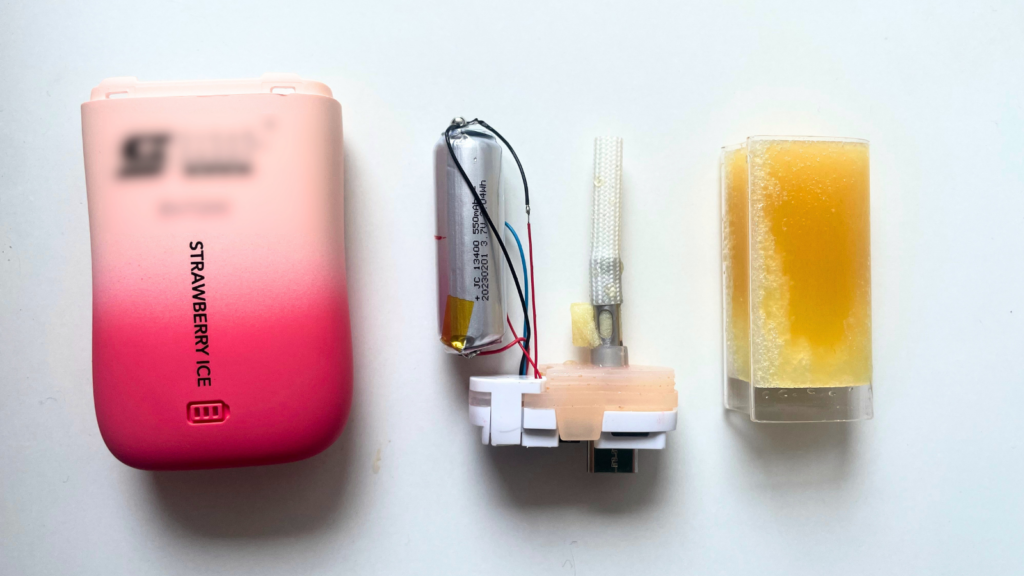
Tell Microsoft: Don’t leave millions of computers behind
Global e-waste is growing 5 times faster than recycling
Take Action
Electronic waste (e-waste) is the fastest growing waste stream in the world and includes anything with a plug or a battery. Now, our work to curb e-waste is gaining momentum. Oregon Gov. Tina Kotek signed the nation’s strongest Right to Repair legislation in March. Similar laws will go into effect in California and Minnesota in July. We’ve been campaigning to reduce this waste because of the unique ways that electronics manufacturing and e-waste threaten our health, climate and environment.
It’s been four years since the UN released the previous version of its authoritative international report on e-waste. Here are six of the most surprising facts from the United Nations’ 2024 Global E-Waste Monitor which underscore the urgency of our campaign:

Stop Selling Disposable VapesPhoto by Staff | TPIN
Disposable e-cigarettes, better known as vapes, have become a pervasive part of our society. The vape market is expected to grow by 31% annually until 2030 and vape waste could grow at an equally dangerous rate.
Nothing used for a day or two should pollute our environment for hundreds of years. According to CDC Foundation sales estimates, lining-up the disposable vapes sold in a year would stretch for 7,000 miles—long enough to span the continental U.S. twice. Because there is no standard legal way to recycle these products, many users just toss them. U.S. PIRG Education Fund’s Vape Waste report found that Americans throw out 4.5 disposable vapes per second.
The United Nations found the vape batteries produced in 2022 contained 286,000 pounds of lithium. Mining for and disposing of this element can have negative environmental repercussions. The report points out that although lithium recycling is technically feasible, it’s not economically viable under current conditions. In 2022, only 13,000 pounds of lithium were recovered from all e-waste. That’s less than 5% of the lithium needed to power disposable vapes just that year.
Dozens of countries around the world have banned disposable vapes. In the U.S., lawmakers across the country have introduced some 48 bills that ban, partially ban, or implement recycling programs for vapes.

Photo by Rwanda Green Fund | CC-BY-SA-2.0
Small appliances such as microwaves, vacuums, Internet of Things devices and vapes weigh less than large ones such as dishwashers and refrigerators. Yet, surprisingly, smaller equipment composes the largest portion of global electronic waste — 45 billion pounds annually. We need to push back against manufacturers who make products destined for the dump. We shouldn’t tolerate disposable electronics such as vapes, or unnecessary “smart” products such as internet-enabled toilet bowl trackers, toothbrushes and microwaves. The waste from these small products adds up to billions of pounds and less than one-eighth is even collected for recycling.
Tech manufacturers often pressure us to replace our devices when they still work. Phones and laptops that should still work end up obsolete because of prematurely ending software support timelines, restrictions on reuse and repair, and (sometimes intentionally) bad design. Our Chromebook Churn report pushed Google to extend support to 10 years for its popular laptops. Previously, the security features on these computers would expire and they would become unsafe for school use. Microsoft’s decision to end support for its Windows 10 operating system could send 400 million PCs into the junkyard. We can’t stay on this disposability treadmill that makes us replace devices that should still work.
Microsoft's decision to end support for Windows 10 could cause the single biggest jump in junked computers ever. Tell Microsoft: Don't junk millions of computers.
Take Action
Electronic waste is the fastest growing part of the U.S. municipal waste stream. Americans throw out just shy of 8 million tons of electronic waste each year, more than nearly every other country in the world. We’re getting rid of more than 500 pounds of electronic waste each second. That’s equivalent to more than 16,000 jumbo jets’ worth of waste every year.

Photo by Rwanda Green Fund | CC-BY-SA-2.0
Rare earth elements are used in magnets, memory storage, electric cars and buses, e-scooters, and other necessities for a future without the air pollution that exacerbates climate change. To keep up with increasing demand for these raw materials, mining companies are proposing to extract them from the deep sea — a process that causes extensive environmental damage. Ninety-nine percent of the elements we use to meet demand comes from extraction, while less than one percent is recycled materials. Our recycling system is not capable of creating a circular economy for these elements. We need to focus on reducing, reusing and recycling the electronics that require these rare earth elements before engaging in more damaging extraction.
The first step is to stop manufacturing products that have glued-in batteries that act as timers counting down their lifespan. No products should have consumable batteries that can’t be replaced when they die. These products, including Apple Airpods, aren’t designed to last, taking rare earth elements such as neodymium and dysprosium with them to the dump. Neodymium can cause adverse health effects and dysprosium can present an explosion hazard.

Tell Apple: AirPods shouldn’t be designed to diePhoto by iFixIt | Used by permission
Even though global recycling is growing at a rate of 30 billion pounds per year, it can’t keep up with our insatiable manufacturing of electronics.
We can’t recycle our way out from under the mountains of electronic waste we’re making when only 22% of global electronic waste is recycled. Our social norms of buying, using, and tossing phones, laptops, and other electronics can’t continue at this rate.
We deserve better than a world where nothing is designed to last.
Through our Designed to Last and Right to Repair campaigns, PIRG is working to curb e-waste. Here are two actions you can take right now to help:
Ban disposable vapes

Stop Selling Disposable VapesPhoto by Staff | TPIN
We need to ban disposable vapes and stop producing disposable technology items that waste our finite resources. Thirty-two states have introduced legislation that would ban, partially ban or implement recycling programs for vapes. We’re also calling on retailers and franchisees such as 7-Eleven, Mobil, Citgo and others that have received warnings from the U.S. Food and Drug Administration to stop selling these products.
Tell Microsoft: Don’t leave millions of computers behind
Expiring software shouldn’t be the reason we have to stop using our computers. We won a commitment from Google to support Chromebooks for 10 years. However, Microsoft’s decision to end support for Windows 10 could push 400 million PCs into the junkyard. After we delivered 20,000 petition signatures calling on Microsoft to do better, the company announced it would extend paid support for the operating system, but the best way to prevent waste would be to automatically continue software support.
Microsoft's decision to end support for Windows 10 could cause the single biggest jump in junked computers ever. Tell Microsoft: Don't junk millions of computers.
Take Action
Lucas leads PIRG’s Designed to Last campaign, fighting against obsolescence and e-waste and winning concrete policy changes that extend electronic consumer product lifespans and hold manufacturers accountable for forcing upgrades or disposal.